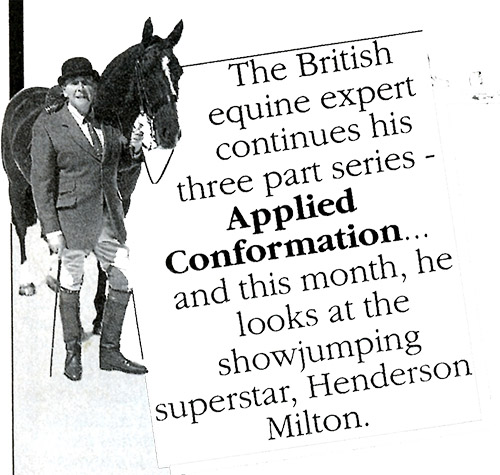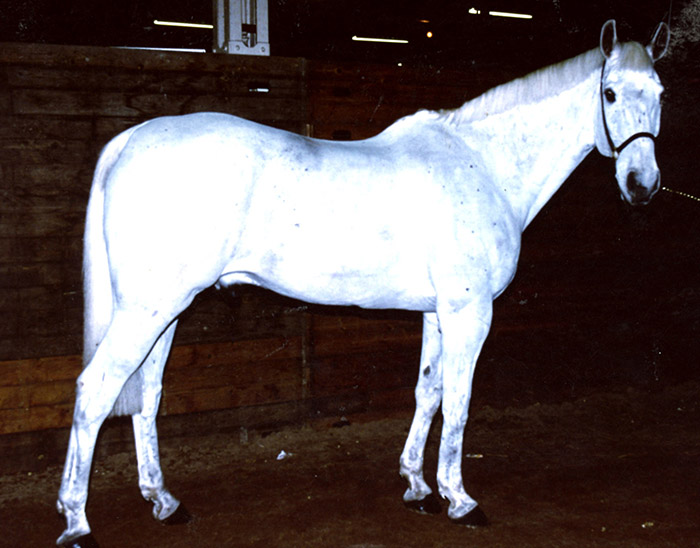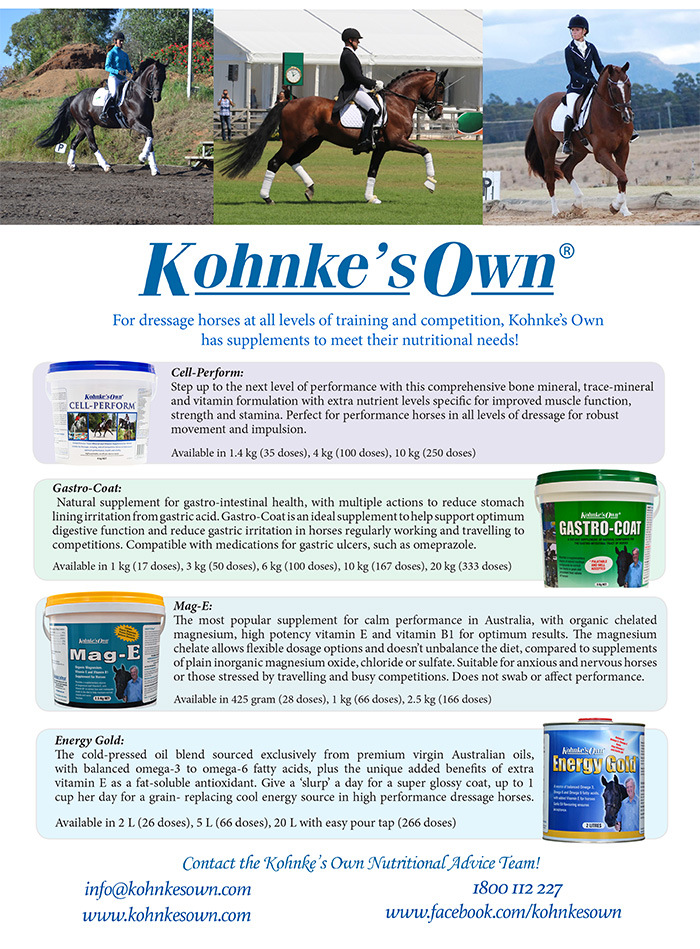Milton
A lovely horse with exceptional strength in the quarters and hindleg. Compare the hindleg triangle with that of the speed horse, Messiah (go to part one)
In this instance the placement increases the lifting strength but reduces the capacity for speed. Note also, the greater length in the body. The forehand and shoulder are certainly powerful but lack the obliquity of the galloper. In this instance, this is not a matter of consequence, for the conformation is exactly right for the the purpose at which this horse excels, showjumping.
Looking at Horses
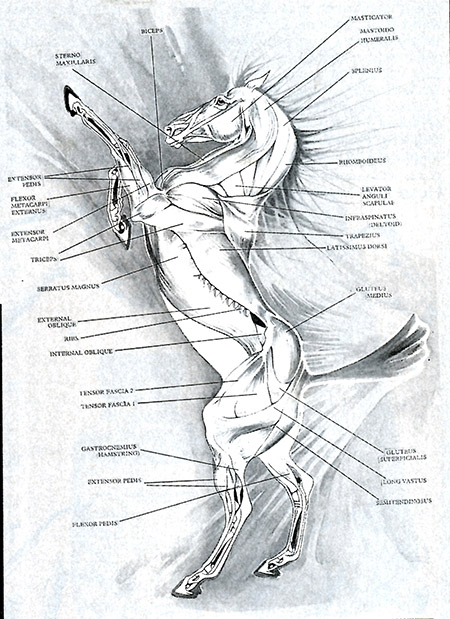
The manner in which the head is connected to the neck at one end (the setting-on of the head and neck) and how it merges into the shoulder at the other can tell us a good deal about a horse’s capabilities, as well as a possible tendency to faulty breathing.
To be avoided at all costs is the abrupt junction between head and neck which results in a thick, fleshy throat. This type of conformation is usually found with a short, thick neck offering no ‘length of rein’ (ie. measurement from poll to wither) which then runs into thick upright shoulders.
‘Cock-throttled’ is the term applied to horses in whom the angle of head and neck is overly acute.There is excessive length between the base of the ear and the throat and it is almost always accompanied by a bulging parotid gland. The result of this conformation, in which the fault is frequently compounded by a notable narrowness between the lower jawbones (it should be possible to insert a closed fist between the branches), is to restrict the breathing, because of the larynx being compressed, and to render the horse incapable of flexion at the poll.
If an attempt is made to force a flexion by use of draw reins, for instance, the horse will evade the pain he experiences by flexing from the lower third of the neck, thus becoming overbent and out of balance.
Other evasions caused by the faulty setting of head and neck are bit resistances, jaw crossing and a stiffening of the neck muscles which must necessarily restrict the freedom of the forward movement.
At the other end, the ideal is for the neck to be streamlined into the shoulders in an uninterrupted, graceful curve. For this to happen the lower end of the neck has to be sufficiently wide, which demands well-formed neck bones and a strongly developed mastoido-humeralis muscle at the junction of neck and shoulder. In instances where the neck seems to end before it reaches the withers, so causing an interruption in the smooth curvature, it will be found that there is considerable width between the shoulders at the top end, the scapula almost invariably being upright rather than sloped.
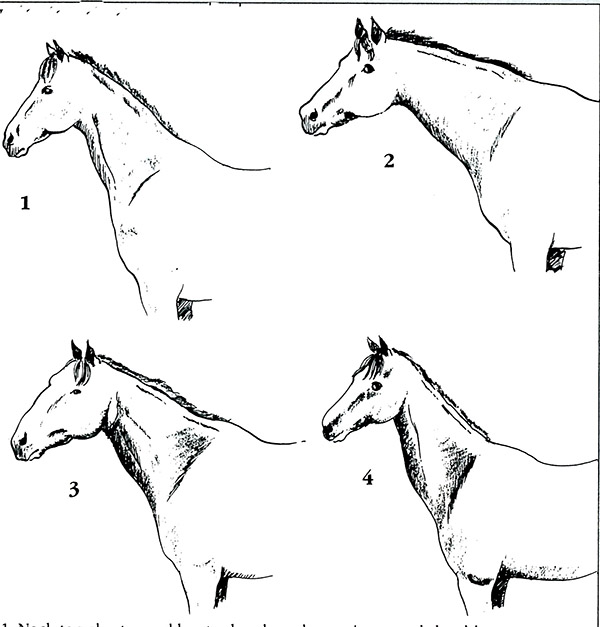
- Neck too short, good hunter head, neck runs into good shoulder
- Well set-on neck running into straight shoulder togive a misleading overall impression. Good head
- Common head, pig eye, thick nostrils, large jawbones, pronounced parotid gland. Neck almost upside down,straight, loaded shoulder.
- Ewe neck, straight shoulder, round ribs under saddle, tied-in elbow.
Two types of neck structure are undesirable in a riding horse: the ewe-neck and the swan-neck. The former has a concave top line, the lower line of the neck bulging objectionably on account of the over-developedmusculature. Inevitably there will be serious bridling problems. In some instances, where for example the enlarged muscle formation on the lower side of the neck has been caused by bad riding (it can be imagined how bad), some correction of the condition can be obtained by sensible remedial schooling, encouraging the extension and lowering of the head and neck.
A swan-neck is one which is convex in its upper third so that it gives the appearance of the head having been dropped on vertically and, as a result, being carried close to the horizontal plane.
A study of the neck leads us to the withers and the all-important shoulder.
Critical
The shape, definition and positioning of the withers, arising from superior spines of the third to ninth dorsal vertebrae, is one of the greatest importance and is critical to the movement of the forehand. The withers are the point of attachment for the muscles supporting the forehand, and to them is attached the suspensory ligament of head and neck, by which the latter is extended and contracted.
Also anchored to the withers are the muscles of the back; the muscles activating the ribs in the inspiration of air and those attaching the shoulder blades (scapula) to the body.
A high wither (without being so high as to be disproportionate) acts most effectively in the full, free movement of the forehand. The further the withers are placed to the rear (‘well laid-back’ is the term) the greater will be the obliquity of the scapula, and in consequence, the stride will be long, free and comfortable for the rider. Well-defined withers position the saddle properly and keep it in place on the back – the opposite conformation, low and flat, makes the fitting of the saddle difficult. A good wither combined with a good trunk and back formation will virtually allow a saddle to stay in place without a girth.
Uneconomical
Low, flat withers are almost always accompanied by upright shoulders which will produce a short, choppy action in the forelegs which is uneconomical, uncomfortable and causes greater damaging concussion to the lower limbs. Usually upright shoulders are lumpy because of their being over-loaded with muscle (a ‘loaded’ shoulder) and the action is further impaired by a rolling movement.
In the mature riding horse, wither and croup should be in line, or, ideally, the wither may be a little higher. This arrangement is conducive to good balance and comfort, and minimises wear on the forelegs.
Horses lower in front than behind (which is natural enough in young stock) are obviously thrown downhill on to the forehand with all that entails in terms of wear, balance, etc. Nonetheless, certain authorities will hold that horses made in this way may produce greater speed.
The shoulder is probably the most critical factor in deciding whether a horse has a ‘good front’ or not. Almost to the exclusion of all else, the action depends upon the shape and placement of the shoulder blades (scapula). In the riding horse they tend to be close at the top, not wide as in the draught types. In conjunction with the wither they should be ‘well laid back’ and the blades as long as is appropriate.
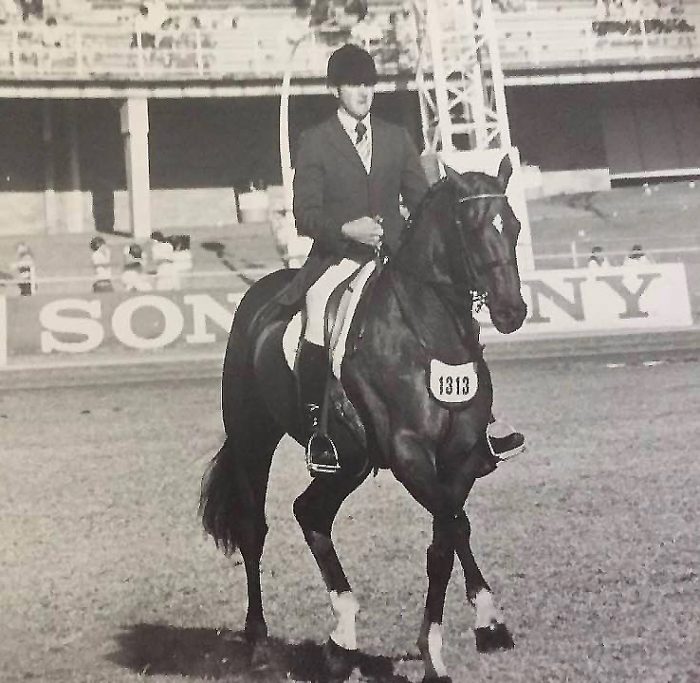
Ideal
The ideal inclination, measuring from the junction of neck and withers to the point of the shoulder, is estimated at 60 degrees. From the highest point of the wither to the point of the shoulder, 43 degrees, from the point of the shoulder to the junction of the withers with the back, 40 degrees.
One will get some idea of the slope of the shoulder by stretching a piece of string between the point of the shoulder and the highest point of the wither (or the posterior angle of the scapula,which without practice is rather more difficult to pinpoint exactly). If the distance and the angle of inclination is noted on say half a dozen horses of similar size, one begins to see the differences which can occur.
Longer Stride
Just as critical to the action as the scapula, is the connecting humerus. If the latter is short,the foreleg is positioned further forward, thus lengthening the stride and producing a long, low, free action which reduces the degree of concussion to which the limb will be subjected.
A long humerus places the foreleg further back under the body, shortens the stride,produces a more elevated knee action and must, therefore, increase the concussion in the limb.
Nonetheless, however good the shoulder, it is worth remembering that the knee is rarely brought in advance of the point of the shoulder at walk; at trot, the knee does not go beyonda line dropped from the poll to the ground. At gallop, the forefoot meets the ground in line with the nose, and only very rarely is the footfall in advance of that point.
A poor shoulder, of course, causes the foot falls to be considerably further to the rear than those quoted.
Chests which are wide (a strength characteristic) produce a fatiguing rolling action at canter and gallop. Those which are too narrow, giving the appearance of ‘both legs out of the same hole’ may cause the forelegs to ‘brush’ against each other or even to ‘plait’, ie. to cross over each other – a dangerous way of going.
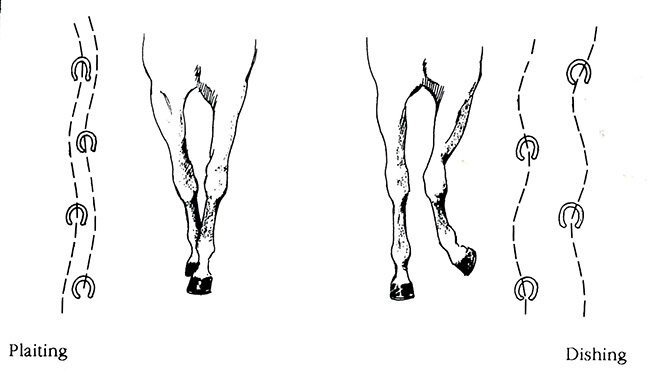
Imaginary line
The relationship of chest with foreleg can be checked by standing in front of the horse and imagining a line drawn from the point of the shoulder to the ground. It should pass through the centre of knee, fetlock and foot. Any deviation from this line has to be regarded as a conformational weakness which will have an effect upon the straightness of the movement and may also result in uneven wear in the joints.
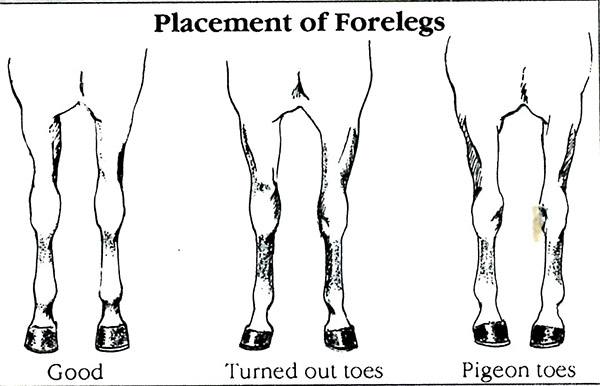
In the forelegs the first concern is with the elbow,the position of which is dependent upon the length of the humerus. If the elbow stands well clear of the ribs, permitting the insertion of a fist between limb and body, there will be no interruption to the freedom of the foreleg. Conversely, if the elbow lies hard up against the ribs (‘tied in’) the movement of the shoulder and thus of the foreleg is restricted. With an elbow set very far back, greater concussion is caused to the spine (and the rider’s seat).
Any failing in the elbow’s position throws extra strain on the hocks, which have to work that much harder to compensate for the failure of the forelimbs.
Well muscled
The forearm has to be well muscled and very strong. It must be sufficiently long for the knee to be carried as low as possible on short cannon bones. Long cannons are a structural weakness and very nearly the ultimate abomination. The knees need to be big and as flat as possible on their surfaces. Additionally they have to be a matched pair. If one knee is smaller than the other it will be exposed to greater strain, and has to be regarded as a source of incipient trouble.
Big, flat knees have well-defined pisiform bones and provide a carpal sheath (a channel) which is broad enough to carry the flexor tendon without its being pinched. Small, round knees almost always accompany chronic tendon troubles.
If the movement is to be straight, the knee has to be perpendicular throughout its length and straight in relation to the leg.
Worst faults
The worst faults in the lower limb are when a horse is ‘back of the knee ‘, sometimes termed ‘calf-knee’, which is when the leg curves inwards below the joint, and condition called ‘tied in below the knee’, which is when the measurement round the leg below the knee is less than that nearer the fetlock joint. Both cause tendon problems through constrictions and neither helps in the absorption of concussion in movement.
Horses that are ‘over at the knee’ are those whose cannons slope to the rear below the joint, the knee seeming to be inclined forwards as a result. It may be unsightly, but it seems to have no ill effects upon performance. Often it is caused by plain hard work, but sometimes it is just part of the individual make-up. One rarely gets tendon problems with legs of this kind.
Fetlocks, like knee joints, need also to be large, well-defined and flat on their sides. Filled, or puffy, joints are a sign of wear and one draws one’s own conclusions about that according to the horse’s age.
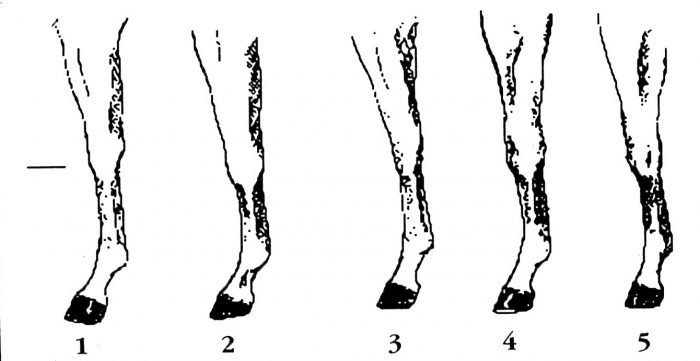
- Light of bone, long cannons, small knees, tied in below the knee
- Good foreleg, with good flat bone, large knees, fluted tendons, average pasterns, well developed forearm.
- Small knee, back of knee
- Good foreleg, with well developed trapezium bone
- Over at knee (no fault)
Shock Absorbers
Fetlocks run into pasterns which act as shock-absorbers. They cannot, therefore, be upright and short. Nor should they be over-long. Long pasterns give a wonderfully comfortable ride but like everything else which is disproportionate they have to be looked upon as being a potential weakness.
Hind pasterns are shorter and more upright than those of the forelimbs because of the compensating flexion in the hock. Where the latter is unduly straight, however, the pastern often compensates the failing by being longer and more sloped.
Bone
‘Bone’ in horsy terms, refers to the measurement round the leg taken below the knee and all authorities agree that it must be ample in relation to the general build of the horse. It is bone, together with the build, which is a principal factor in assessing an animal’s weight carrying capacity. There used to be a formula which related bone measurement to weight capacity. It went like this: 8 inches (20 centimetres)= 11-12 stone (70-76 kilograms); 9-10 inches (23-25 centimetres) = 13-14 stone(83- 89 kilograms); 10-11 inches (25-28 centimetres) = 1 5+ stone (95 kilograms). Where it came from or what method was employed to arrive at those figures I do not know. It is not, I think, a bad general guide but there is something more to ‘bone’ than that.
Density
Great play is made of the terms ‘flat, dense bone’, or ‘good, flinty bones’ as a short perusal of the breed description of almost every light horse or pony breed society will reveal. In fact, of course, there is no way of assessing the density of an individual’s bone, at least not in life, and what do we mean by flat or flinty?
Indeed, even the measurement below the knee is not related to the circumference of the bone itself, since it includes a composite structure of ligaments, tendons and tissues with which the bone is surrounded.
Be that as it may, the cannons should feel cool and hard to the touch. They should certainly not be puffy so as to give the impression of being round instead of flat. Additionally, bone below the knee has to be in proportion to the body mass it carries.
Horses that are ‘light of bone’ ie. insufficiently endowed below the knee in comparison with their tops, are to be viewed with some suspicion.
In the final installment we shall look at the horse’s back and trunk, its hindquarters and feet and their effect on the horse’s action.


